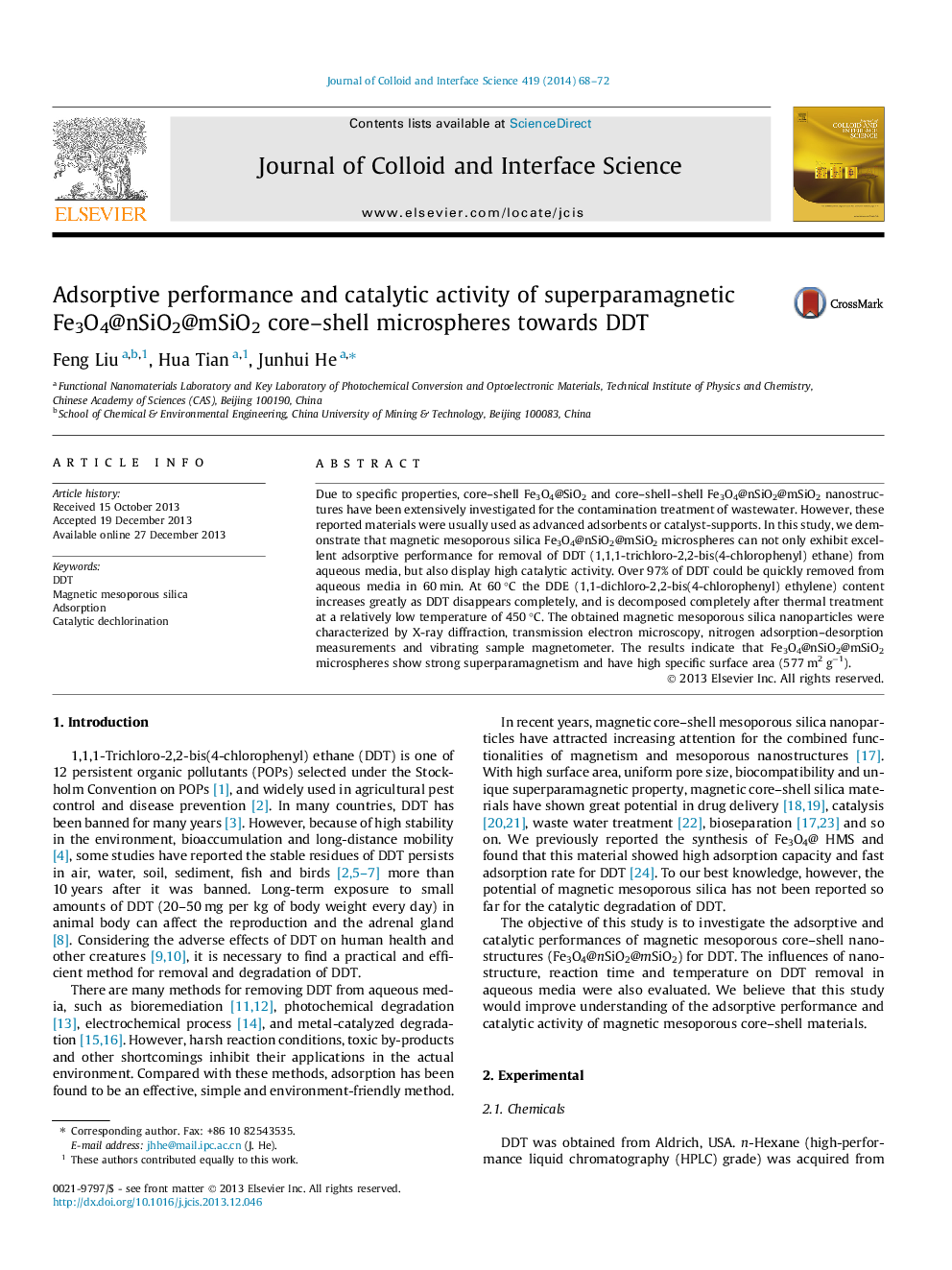| Article ID | Journal | Published Year | Pages | File Type |
|---|---|---|---|---|
| 607366 | Journal of Colloid and Interface Science | 2014 | 5 Pages |
•Fe3O4@nSiO2@mSiO2 microspheres have been fabricated by a layer-by-layer method.•The superparamagnetic mesoporous silica possesses large surface area.•The microspheres exhibit high adsorptive efficiency and catalytic activity for DDT.•Over 97% of DDT can be removed from water in 1 h, and dechlorinated at 60 °C.
Due to specific properties, core–shell Fe3O4@SiO2 and core–shell–shell Fe3O4@nSiO2@mSiO2 nanostructures have been extensively investigated for the contamination treatment of wastewater. However, these reported materials were usually used as advanced adsorbents or catalyst-supports. In this study, we demonstrate that magnetic mesoporous silica Fe3O4@nSiO2@mSiO2 microspheres can not only exhibit excellent adsorptive performance for removal of DDT (1,1,1-trichloro-2,2-bis(4-chlorophenyl) ethane) from aqueous media, but also display high catalytic activity. Over 97% of DDT could be quickly removed from aqueous media in 60 min. At 60 °C the DDE (1,1-dichloro-2,2-bis(4-chlorophenyl) ethylene) content increases greatly as DDT disappears completely, and is decomposed completely after thermal treatment at a relatively low temperature of 450 °C. The obtained magnetic mesoporous silica nanoparticles were characterized by X-ray diffraction, transmission electron microscopy, nitrogen adsorption–desorption measurements and vibrating sample magnetometer. The results indicate that Fe3O4@nSiO2@mSiO2 microspheres show strong superparamagnetism and have high specific surface area (577 m2 g−1).
Graphical abstractFigure optionsDownload full-size imageDownload high-quality image (43 K)Download as PowerPoint slide
